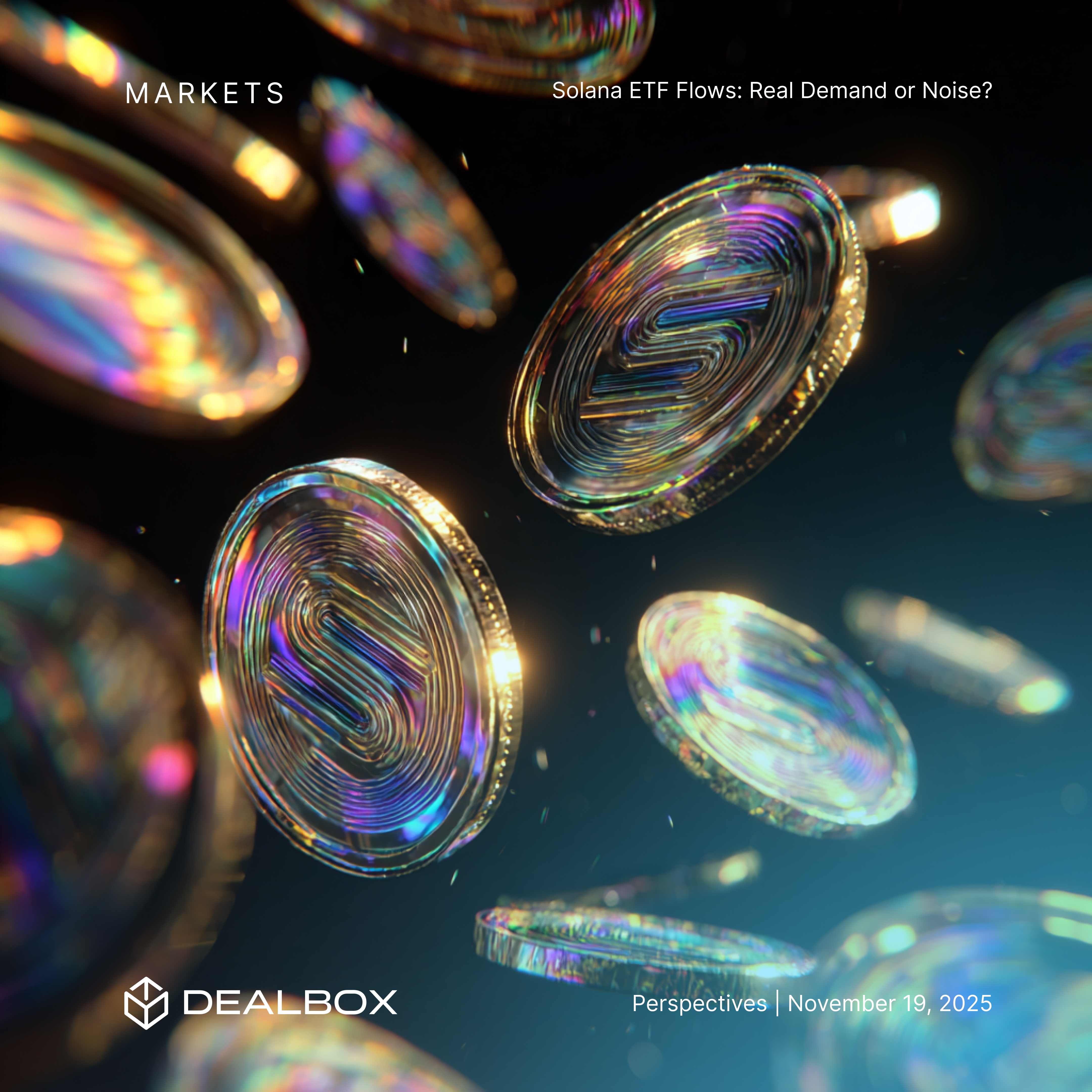Four major asset managers launched Solana ETFs within weeks of each other. Everyone's reading it as institutional conviction in Solana.
The real story is simpler and more structural.
The Constraint Was Permission
The clustering wasn't about Solana being special. It was about regulatory clarity finally arriving.
These managers sat on applications for months, maybe years. The SEC greenlit the structure, and everyone rushed through the same door at once.
What people miss is how much pent-up institutional demand existed, blocked entirely by regulatory uncertainty. The timing tells you the constraint was never interest. It was permission.
Fee Waivers as Market Experiments
Fidelity is waiving fees until May 2026. VanEck is waiving them on the first billion dollars. These aren't generous promotions.
They're discovery mechanisms disguised as marketing.
These managers are subsidizing a market experiment. They're paying to learn whether institutional allocators will actually hold these products once the novelty wears off and economics normalize.
By 2026, they'll know if they've got sticky assets or if they just rented flows during a hype cycle. The waiver period is long enough to survive multiple market cycles and see what investor behavior looks like when staking yields aren't the shiny new thing anymore.
They're buying data about institutional appetite at a known cost rather than guessing blindly.
Reading Real Signals
Real institutional behavior shows up in boring stuff. Consistent inflows during drawdowns. Minimal redemptions when yields compress. Allocation sizes that suggest committee approval rather than tactical trades.
Rented flows look different. They chase performance, they're size-inconsistent, and they disappear the moment the story changes.
When SOL dropped from $140 to $130 and inflows continued, most analysts read it as bullish. The sophisticated read is that price-insensitive flows aren't necessarily conviction. They're often structural.
We're watching pre-committed capital deployment, not real-time decision making. Early inflows are heavily skewed toward liquidity providers and authorized participants who need inventory to make markets.
We're still in the plumbing phase. The test comes in six months when there's no operational reason to buy and flows either continue or they don't.
The Yield Compression Nobody Sees
Here's the structural piece most people aren't pricing in. When billions flow into these products, that capital gets staked through a handful of validators these managers select.
More SOL locked up means diluted rewards for everyone. But ETF managers aren't optimizing for maximum yield like a crypto-native would. They're optimizing for custody safety, regulatory compliance, and operational simplicity.
So they're staking with the largest, most established validators who charge higher commission rates. The net yield to ETF holders gets compressed twice. Once from increased network participation, and again from the institutional validator premium.
Add in Fidelity's 15% staking fee post-waiver, and suddenly that 6% headline rate becomes 3-4% net to investors. Institutional infrastructure costs money, and those costs come out of yield.
The Education Gap
Bitcoin and Ethereum had a massive advantage. They were known quantities with years of institutional familiarity before ETFs launched. The ETF was just the final delivery mechanism for demand that already existed.
Solana's different. It's getting the institutional wrapper before it has foundational awareness. Institutional investors hold less than 1% of total SOL supply, compared to 16% for Bitcoin.
Most institutional allocators still don't understand Solana's architecture, its validator economics, or why it matters beyond "it's fast and cheap."
With Bitcoin, the plumbing phase lasted maybe 8-12 weeks, then real adoption flows kicked in. For Solana, expect that plumbing phase to extend 6-9 months because the education cycle is happening in parallel with product adoption.
Solana ETFs are doing double duty. They're both building infrastructure and building awareness simultaneously. That's why these fee waivers run so long.
What Actually Has to Happen
Three things need to happen, and they're all outside the ETF managers' control.
First, Solana itself needs to maintain technical reliability. No major outages, no consensus failures, no events that validate institutional skeptics' concerns about network maturity.
Second, staking yields need to stay attractive enough to justify the complexity premium, even after compression. If net yields fall below 3% while slashing risk remains non-zero, the risk-reward stops making sense.
Third, and most critical, at least one major institutional allocator needs to publicly validate the product category. Not a crypto hedge fund, but a state pension fund, a university endowment, or a major RIA announcing a sustained allocation.
Without that institutional stamp of approval, these products risk becoming niche vehicles for crypto-native capital rather than true crossover products.
The Real Stakes
If this works, it proves that institutional capital will accept operational complexity in exchange for yield. That changes everything.
The next wave of crypto ETFs won't be simple spot products. They'll be yield-generating structures across DeFi protocols, liquid staking derivatives, and other proof-of-stake networks.
JPMorgan projects $3-6 billion in inflows for these Solana products. That's the benchmark for whether this experiment works.
If Solana ETFs succeed with staking, it opens the door to institutions thinking about crypto as an asset class with multiple return streams. Price appreciation, staking yields, DeFi yields, governance participation.
That's a fundamentally different conversation. Crypto stops being a speculative alternative asset and starts becoming a functional part of institutional fixed income and yield strategies.
But it all hinges on these Solana ETFs proving the model works. That you can deliver institutional-grade yield products in crypto without the operational risk blowing up in your face.
If they fail, it sets that entire evolution back five years.
The cautionary tale scenario is that fee waivers expire in 2026, assets drain because the only holders were yield-chasers and liquidity providers, and the products limp along with $200-500 million in AUM each.
Not dead, but not the institutional breakthrough anyone hoped for.
We're watching a market experiment with trillion-dollar implications. The constraint was permission. Now we'll see if the demand was real.
